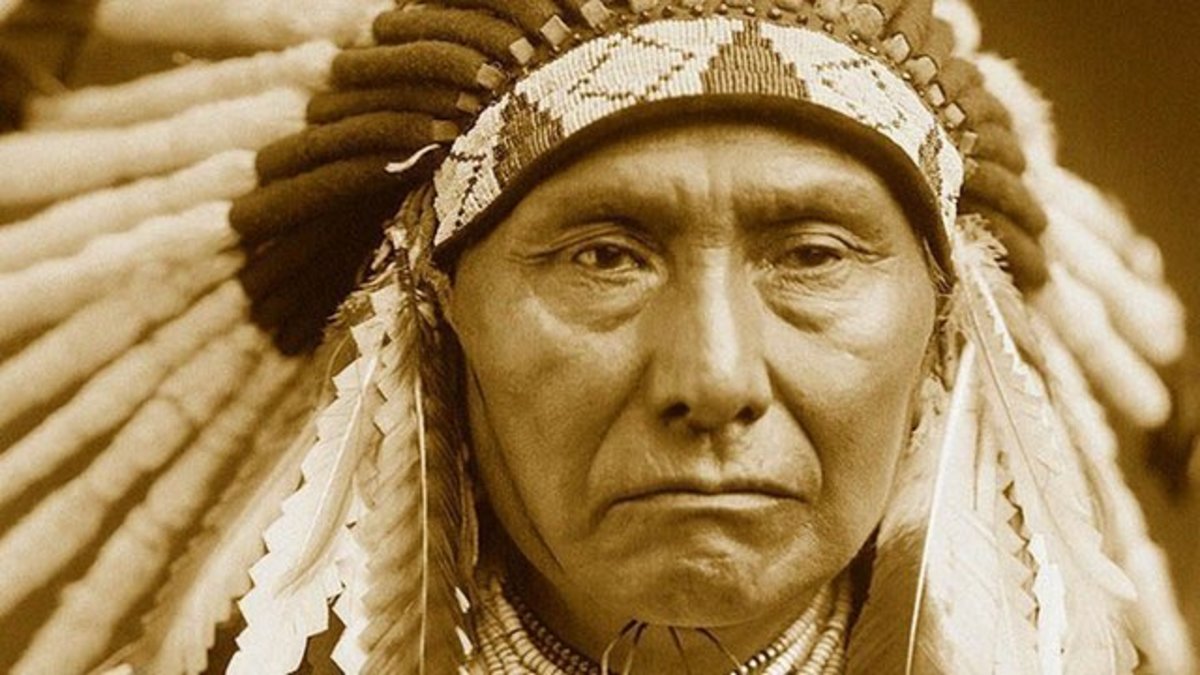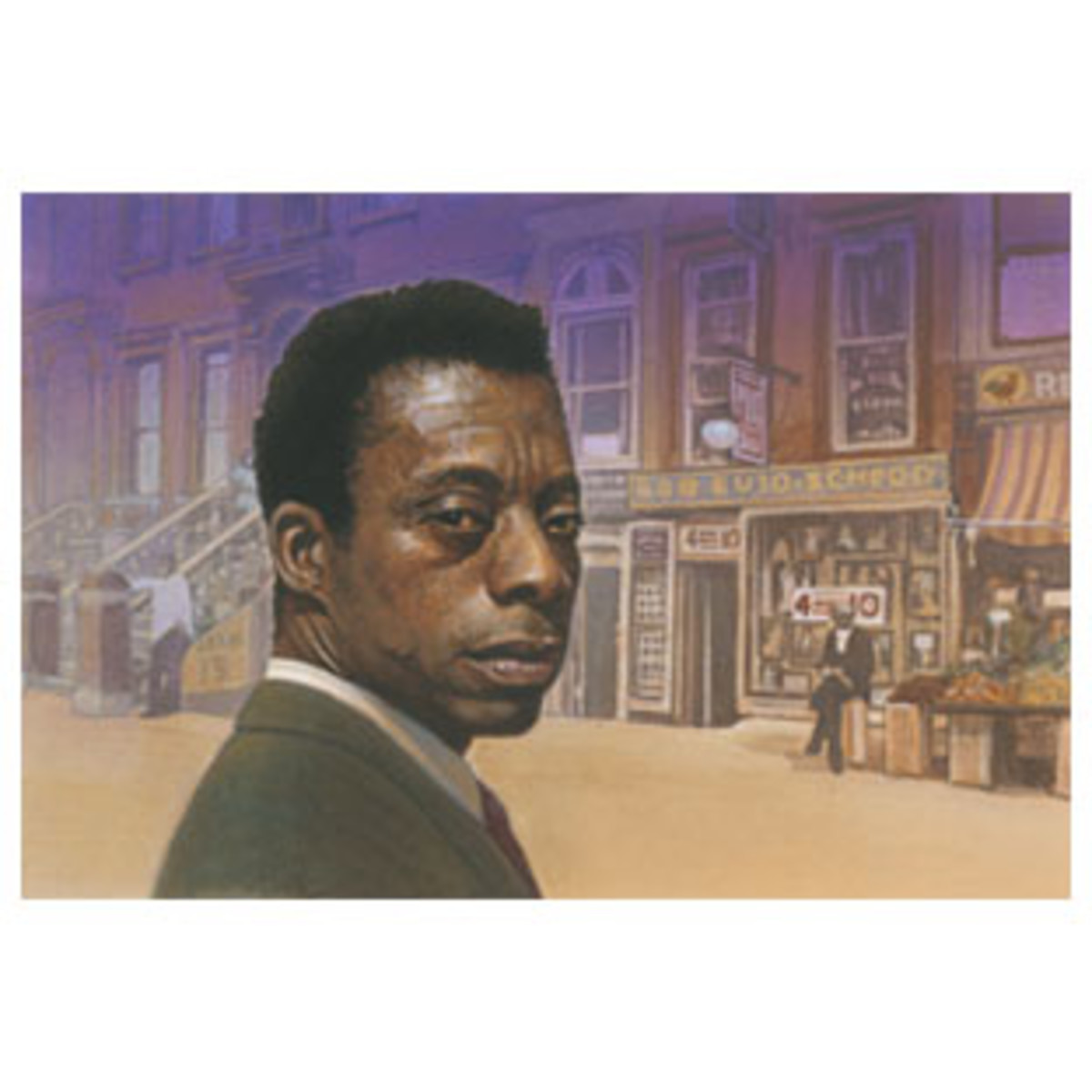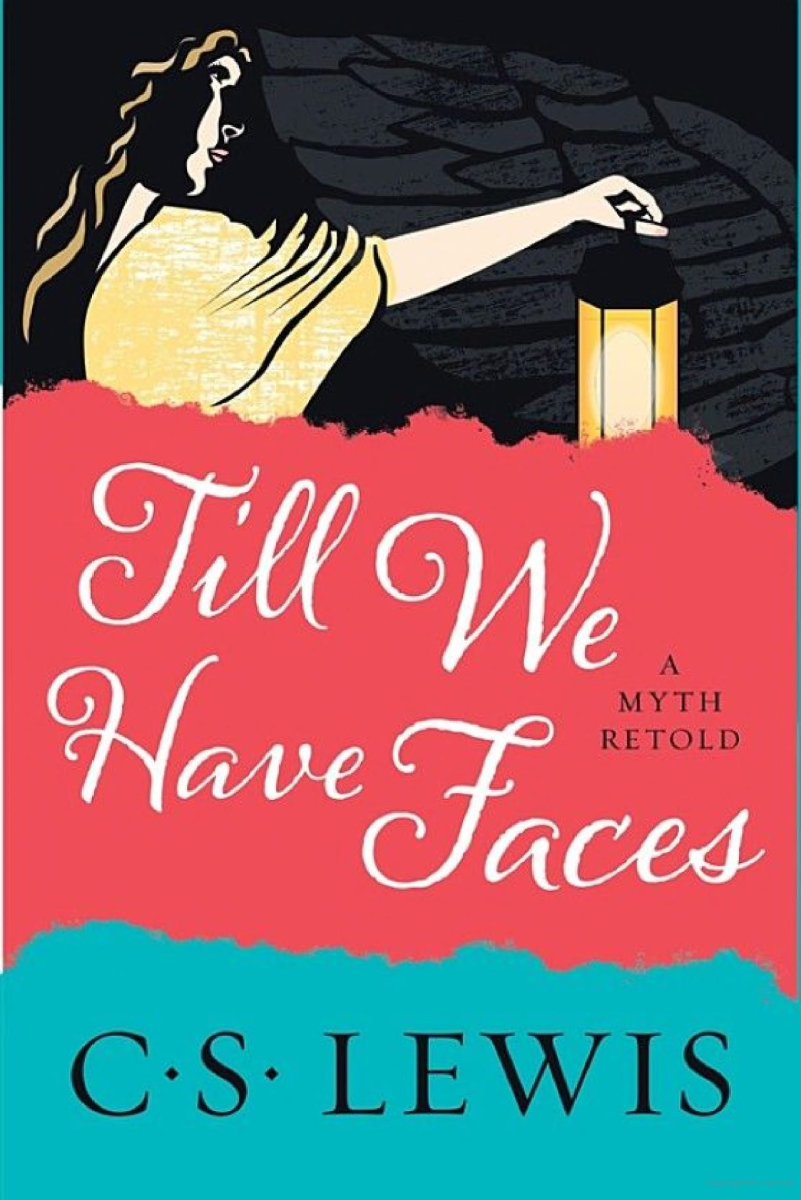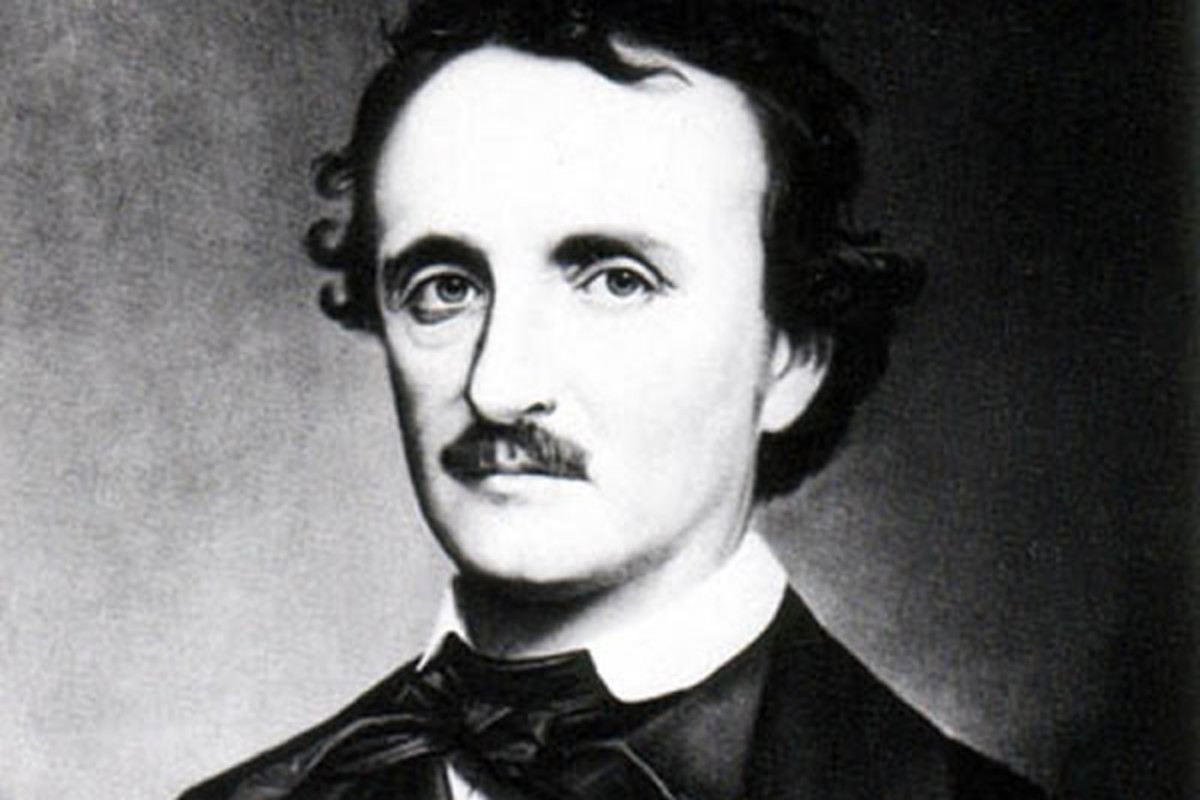The Great American Anti-Hero: Faulkner's Thomas Sutpen as the Uniquely American Version of Joseph Campbell's Archetype
“We have a few
old mouth-to-mouth tales; we exhume from old trunks and boxes and drawers
letters without salutation or signature, in which men and women who once lived
and breathed are now merely initials or nicknames out of some now
incomprehensible affection which sound to us like Sanskrit or Choctaw; we see
dimly people, the people in whose living blood and seed we ourselves lay
dormant and waiting, in this shadowy attenuation of time possessing now heroic
proportions, performing their acts of simple passion and simple violence,
impervious to time and inexplicable. . . ."
-- William
Faulkner, Absalom, Absalom! (100).
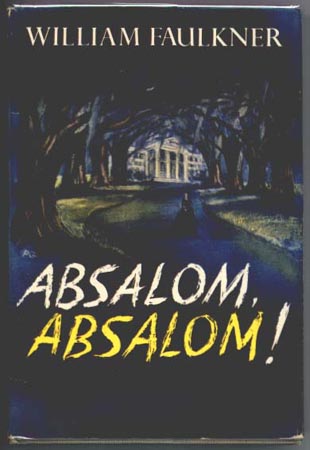
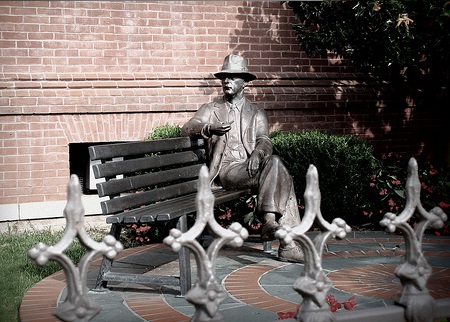
William Faulner's Absalom, Absalom!
Any attempt to say something meaningful about the literature of William Faulkner must acknowledge the overwhelming task of saying anything at all about his literature. This truth makes itself most apparent in an attempt to write about Absalom, Absalom!, “the greatest of Faulkner’s novels” (Brooks, 295). The novel in itself is too much to deal with in one essay. More specifically, the novel’s relationship with myth is too complex for a single essay. In fact, many aspects of this complex relationship between myth and Absalom, Absalom! have proved fascinating enough to inspire volumes of criticism. This complexity and fascination manifests itself most often as a diagnosis of the Greek and Hebrew myths appropriated. The significance of such appropriation, however, is rarely considered.[1] This essay proposes to explore the significance behind the novel’s appropriation of the hero myth.
A critical interpretation of Absalom, Absalom! as the renewal of the hero myth for modern day America in the character of Thomas Sutpen elucidates the destructive elements inherent in America by reinterpreting them as myth and thus endowing them with the significance reserved for those myths by which they are represented. This significance can be read as a criticism of modernity, but more appropriately should be seen as an indictment of something much more timeless than America: man’s inhumanity to man.
The scope of this discussion is limited to the hero of the novel, Thomas Sutpen, and his children. The novel “invites the reader to see nearly all of [the Sutpens]…in roles that are applicable to both the Greek and the Hebrew cultures” (Bjork, 197). A mythical interpretation of the Sutpens by way of Greek and Hebrew culture will have to take into account four things. First, that America has no mythological past and thus its relationship with mythology is in this case appropriation. America, unique in the western tradition has no source of mythologies to draw from so Faulkner takes Greek and Hebrew myth. Second, that there are specific myths that hold specific meanings for Faulkner as he tells his story. Of these myths, this paper shall focus specifically on the hero myth because of its centrality to the novel. Third, Americans are drastically different than the ancient societies whose myth’s Faulkner uses. Faulkner wrote Absalom, Absalom! in 1936. Though most of the events of Sutpen’s life take place before, during, or directly after the Civil War, the novel is not a historical narrative of the Civil War, but a modern myth developed against the Civil War in much the same fashion the Trojan War gave the backdrop for Greek and Roman myth. Lastly, Faulkner’s approach to myth is one characterized by his use of myth to give new meaning to the American experience rather than his use of the American experience to give new meaning to myth.
[1] A major exception to this is Lennart Bjork’s “Ancient Myths and the Moral Framework of Faulkner’s Absalom, Absalom!” Lennart explores Sutpen’s mythological relationship with Greek and Hebrew myth thoroughly, though the question of the significance of appropriation is not asked. Other mythological implications have usually been explored for their usefulness towards a historical interpretation of the novel, or Faulkner’s work as a whole. The significance of the appropriation of ancient myth has not traditionally been the focus of the literary discussion. See Joan M. Serafin’s Faulkner’s Uses of the Classics, Cleanth Brooks’ History and the Tragic, or Patricia Tobin’s “Myth and History in Absalom, Absalom!” for examples of this nature.
To further clarify and identify the purpose of interpreting Sutpen as a mythical hero it becomes important to understand the “modern” qualification made earlier. Joseph Campbell states that for the modern world, “man is now the crucial mystery” (391). If Sutpen is to be the modern hero, he must be the subject of such a “crucial mystery.” Sutpen’s relationship to the narrator’s of the novel, the now of the novel is 1909-1910, forty years after Sutpen dies and “the characters in the fictional present are all storytellers obsessed with the figure of Thomas Sutpen which dominates them from the past” identifies him as the crucial mystery for the narrators of Absalom, Absalom! (Tobin, 253). He is from the past of before the Civil War, before the fall of southern aristocracy. This puts him, for the narrators of the novel, in a mythical past that can never be returned to. From this vantage, Sutpen both embodies the mystery for modern man while simultaneously being sufficiently removed from him in the novel to maintain his mythological significance.
One of the narrators gives insight in to the mystery of Sutpen by declaring that “Sutpen’s trouble was innocence,” an innocence that believed “the ingredients of morality were like the ingredients of pie or cake and once you had measured them and balanced them and mixed them and put them into the oven it was all finished and nothing but pie or cake could come out” (220, 263). This innocence is Sutpen’s tragic flaw. Cleanth Brooks, one of the foremost Faulkner scholars, explains Sutpen’s moderness as his innocence’s resemblance to the “innocence of modern man” (297). He goes on to say that “his innocence resembles that of Oedipus…who, like him, had been corrupted by success and who put his confidence in his own shrewdness” (Brooks 297-307). Sutpen’s innocence is also “a general innocence in white American society” (Snead 135). An innocence that doesn’t understand why it shouldn’t treat people as objects (Tobin 262). In other words, Sutpen’s was the sort of flawed innocence that would erect its economic edifice “not on the rock of stern morality but on the shifting sands of opportunism and moral brigandage” of slavery (Faulkner, Absalom, Absalom! 302).When considering all these different aspects of Sutpen, an image of him as the renewal of the tragic hero for modern America becomes clear.
The other major aspect of Sutpen’s mythological significance is his role as the creator hero. “If God Himself was to come down and ride the natural earth, that’s what He would aim to look like” (Faulkner, Absalom, Absalom! 282). Sutpen’s semi-divine status is strengthened in the minds of the narrators by his “ruthless pursuit of immortality” (Porter 62). Quentin, one of the story’s narrators, obsesses with the image of Sutpen from the past and wonders if “maybe it took…Thomas Sutpen to make all of us” (Faulkner, Absalom, Absalom! 262). Indeed Sutpen declares, “I had a design. To accomplish it I should require money, a house, a plantation, slaves, a family—incidentally of course, a wife. I set out to acquire these, asking no favor of any man” (Faulkner, Absalom, Absalom! 263). This design will become an obsession for Sutpen, and ultimately will lead to his ruin. In Sutpen’s manner of making the above declaration is his innocence. He sees himself as realizing the entrepreneurial spirit of America, but with no emotion or evidence he is aware of the intrinsic value of the individual pieces of such an enterprise. They are merely pieces he can build his “design” with, the same as ingredients in a cake. He does not understand why a wife should be more important than a plantation since he needs both to accomplish his design. This tragic aspect of Sutpen’s design illustrates the creation myth’s tendency towards “a sense of the doom that is continually recalling all created shapes… [they] go forth powerfully, but inevitably reach their apogee, break, and return” and solidifies Sutpen’s role as the creator hero (Campbell 269).
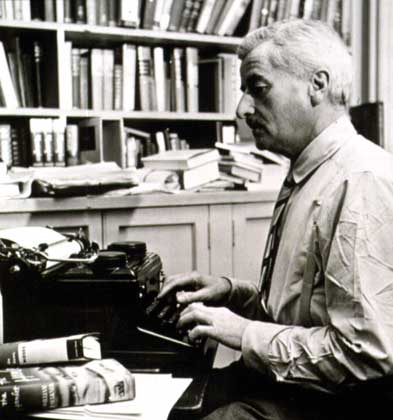
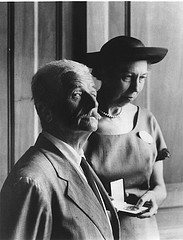
It is a subtle but important point to recognize the similarity between Sutpen’s innocence’s inability to distinguish a wife from a plantation, and antebellum southern slave owners being unable to distinguish black slaves from cattle or property. This strengthens an interpretation of Sutpen as representative of his time. For slave owners and Sutpen, such “things” only held value in their utility to doomed design. This design blinded Sutpen, like Oedipus, to the ruin he was working upon himself. Thus when Patricia Tobin describes Sutpen’s flawed design as a “tragic paradox: that the admirable impulse toward establishing a family tradition within the family of man must be subdued by the denial of kinship before the taboo on race” she might just as easily have been criticizing the antebellum south as a whole (264).[1] James Snead also points out how the novel “illustrates that American caste and economic relations revolve around the black, the source of the paradoxes in Sutpen’s story and American society’s most volatile subject” (134). This paradox, when viewing Sutpen as Snead does, as a representative of his culture, can be used to indict antebellum southern economy as a system built on the “shifting sands of…moral brigandage” (Faulkner, Absalom, Absalom! 302). Such moral brigandage, that is, slavery based upon racism, requires that society, in order to perpetuate the system, place the strongest taboo on miscegenation (the taboo was strong enough to give birth to the term miscegenation, which was first used in a 1863 pamphlet distributed by slave owners to incite anger against abolitionists) (Sundquist 93). It is this necessary taboo that will eventually work doom upon Sutpen’s design. In essence, Sutpen’s creative potential is doomed because, like the south, he can be seen to represent a design that is racist and immoral and therefore cannot last. Sutpen’s story must therefore be “a tale of a curse brought to fulfillment” much like Sophocles’ Oedipus (Serafin 9).
This ruin is realized in the ultimate goal of his design, for Sutpen is “a man who wanted sons and got sons who destroyed him” (Faulkner, Faulkner in the University 71). Like the tragic tradition, this curse plays itself out in the actions of the hero’s sons. The title of the novel itself makes reference to the fate of Sutpen’s sons. The name used in the title, Absalom, comes from the Hebrew tradition. 2 Samuel 13 tells the story of how Amnon, son of King David fell in love with Tamar, sister of Absalom, who was also son of David. Amnon rapes Tamar, and Absalom in his rage kills his brother and runs away only to return later in an attempt to overthrow his father’s kingdom. (The Holy Bible 2 Samuel 13: 1, 2, 11, 14, 22). In the novel, Charles Bon, son of Sutpen, becomes engaged to Judith Sutpen, sister of Henry Sutpen, who is also the son of Thomas Sutpen. This places Thomas Sutpen in the role of King David and endows his design with the proportion of the kingdom signified in the myth. Sutpen’s children live out the curse of Sutpen’s intended kingdom just as David’s do in the Bible. The difference in the novel is that Charles never has the opportunity to consummate his relationship with Judith because Henry kills him first and then runs away.
To understand further significance in the relationship between these characters and myth we must turn attention back to the character of Thomas Sutpen. There is much criticism that explores Sutpen as the hero, and more specifically his story as the story of the hero’s journey.[2] In many cases, the significance of Faulkner’s choice of myth holds for an interpretation of the Sutpen story as the hero myth for modern America remains to be determined. To identify such significance, specific examples in the novel where Sutpen, his journey, and his children are endowed with traditional mythological significance must be considered.
[1] Several critics have both established the paradox of Sutpen’s design being tied to racism as well as making the connection to southern culture in general. (Irwin 9, 11) (Snead 134-135) (Tobin 263-265).
[2] Many critics cite numerous examples of Sutpen’s exploits and their resemblance to the Greek tragedies of Sophocles and Aeschylus as well as the parallel between the American south at the time of the Civil War and the Greek world at the time of the Trojan War. Serafin is particularly helpful in sorting the hundreds of references to ancient myth within all of Faulkner’s work. (Bjork 196-197) (Brooks 297) (Porter 62) (Serafin 2, 18) (Tobin 256, 259, 261). Joseph Campbell’s Hero With a Thousand Faces traces the hero’s journey in myth. His novel will be used to illustrate Sutpen’s own journey as that of the hero.
More on Faulkner...
- How to win a Nobel Prize for Literature even if you can't sell a book: Reflecting on William Faulkne
A hub about William Faulkner's Nobel Prize and the last effect of his work. A copy of his Nobel Prize Speech is included.
Joseph Campbell, in his book The Hero with a Thousand Faces, traces the hero myth and the hero’s journey throughout the myths of many ancient cultures. This reveals a timeless form to the hero’s journey. Using Campbell as a guide, we can interpret Sutpen’s journey from the mountains to the coast line, and then to the West Indies and Jefferson Mississippi, as the journey of the hero.
Thomas Sutpen was born in the mountains of what would be West Virginia around the year 1808 (Faulkner, Absalom, Absalom! 220). No one in the novel, not even Sutpen himself knows for sure when he was born. This adds to his mythic status as a hero (Faulkner, Absalom, Absalom! 227). “Where he lived the land belonged to anybody and everybody and so the man who would go to the trouble and work to fence off a piece of it and say ‘This is mine’ was crazy” (Faulkner, Absalom, Absalom! 221). Thus Sutpen lived in “communal Eden” and was ignorant of the fact that “there was a country all divided and fixed and neat with a people living on it…divided and fixed and neat because of what color their skins happened to be and what they happened to own, and where a certain few men…had the power of life and death and barter and sale over others” (Stonum, 46) (Faulkner, Absalom, Absalom! 221). This ignorant mountain community served as the “womb”, which would incubate Sutpen’s innocence until his family “fell into” the coast from the mountains Sutpen was too young to be completely aware of, thus “he knew neither where he had come from nor where he was nor why” (Campbell, 90) (Faulkner, Absalom, Absalom! 222, 227).
Campbell points out that the hero’s journey begins when “the individual is drawn into a relationship with forces that are not rightly understood…a blunder,” and that “the blunder may amount to the opening of a destiny” (51). Campbell calls this opening of a destiny the “first threshold” (Campbell, 77). This moment for Thomas Sutpen is when he first realizes his innocence of the world around him, which happens the “day when his father sends him to the big house with the message” (Faulkner, Absalom, Absalom! 229). This realization came early after first exposure to the plantation based social order along the coast and the rest of the south. This realization was forever to be linked in Sutpen’s mind with the realization that he was a poor white from the mountains who was even ignorant of his own age (Faulkner, Absalom, Absalom! 227). In one instant the nature of the division of the land he had fallen into would become clear to him, and with it the knowledge of his own place in it.
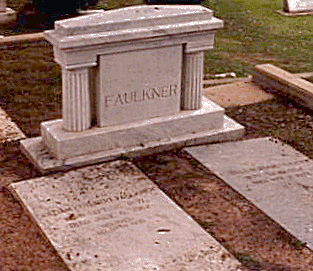
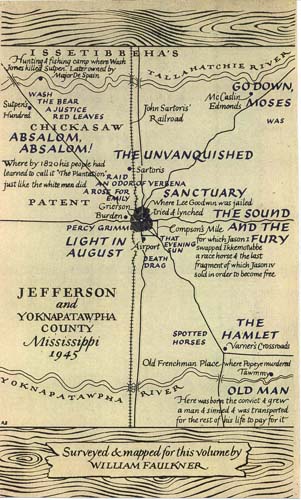
Being sent on an unremembered errand to the plantation owner’s house, Sutpen blunders and approaches the front door which the social division he was unaware he belonged to forbid of him. A “monkey nigger” answered the door and that Sutpen “had never thought about his hair or clothes or anybody else’s hair or clothes until he saw that monkey nigger who…happened to [be] housebred” (Faulkner, Absalom, Absalom! 232). Sutpen never even announced his errand before “the nigger told him…never to come to that front door again but to go around to the back” (Faulkner, Absalom, Absalom! 232). In this instant, not only does Sutpen realize his own inadequacy in comparison to the wealth of the white slave owner, he is filled with rage at the slave who might tell him, a white he was not welcome at the front door of another white man’s house. In that instant Sutpen resolved not only to become a plantation owner, but more importantly in terms of his failure, he resolved to never allow his family to be tarnished, as he saw it, by the black blood that scorned him. Sutpen’s design conceived in this fashion, contains the key to its ultimate doom. Sutpen in this regard mirrors Oedipus whose design led him to accomplish the very deed he sought to avoid. Both Oedipus and Sutpen were doomed from childhood, both remain innocently unaware of that doom and both make damning choices that seal their fate.
This moment on the front steps of the big house is for Sutpen the inspiration and will to realize his design. On the surface this design was to acquire the means to become the master of the big house. Sutpen understood the difference between himself and the owner of the big house was not skin color, but money. Sutpen also understood the difference between him and the slave who turned him away was even larger. Sutpen’s desire to revenge himself upon this doorman is strengthened by other inciting incidents in his childhood. These incidents form the central paradox of Sutpen’s design: it is built upon an inhumane exploitation of his fellow man, black slaves, and like any such opportunistic institution will be doomed to failure.
The rest of Sutpen’s life, and indeed the majority of the novel, is Sutpen’s journey to realize his design. Of course, as for any hero, achieving such a grand design will require Sutpen overcome enormous obstacles. “Once having traversed the threshold, the hero…must survive a succession of trials” before he reaches his destination (Campbell 97). The first thing Sutpen needed was money because his design demanded “above all things money in considerable quantities” (Faulkner, Absalom, Absalom! 243). This lead him to the West Indies where he learned “poor men went in ships and became rich, it didn’t matter how, so long as that man was clever and courageous…one he knew he had and the other he believed he could learn if it were to be taught” (Faulkner, Absalom, Absalom! 242-244).
This statement reveals in Sutpen another aspect of his innocence: shrewdness and courage were all Sutpen believed he needed. He did not understand morality, for morality is not needed to make money, and money is ultimate measure of the success of Sutpen’s design. This strengthens not only Sutpen’s tragic qualities but reinforces his modernity. As Campbell points out, modern man his forsaken his deities (387). Values have been revalued according to their utility to political and economic enterprises. In such a modern world, the closest thing to deity is power, and the ultimate sign of power is money.
Not only does Sutpen rise to the rank of “foreman” to a French sugar planter while in Haiti, he amasses a fortune (Faulkner, Absalom, Absalom! 246). However Sutpen’s choice of Haiti leads him into more serious trials than he foresaw. Sutpen must accomplish an even more “difficult task,” on this “road of trials” (Campbell 297). A local slave uprising finds Sutpen barricaded inside the house of his employer for eight days of battle against vastly superior odds. After eight days of fighting the water supply in the house ran out. Something had to be done, so Sutpen heroically “put the musket down and went out and subdued” the rioting slaves (Faulkner, Absalom, Absalom! 254). Sutpen approached the Herculean task of putting down a slave rebellion single handedly and unarmed. None of the narrators within the novel can offer any definitive explanation of how Sutpen succeeded in subduing them. Indeed the novel says little more than that one word.
This supernatural subjugation, though no deity comes to his aide, harkens the image of the Hebrew judge Samson, or the Greek heroes Odysseus and Hercules who overcame insurmountable odds. The only deity available to help Sutpen is the same available to modern man, his resourcefulness. This reinforces the American or democratic and therefore, modern ideal of the power of the individual while at the same time elevating that individuals resourcefulness to the level heroic myth. Sutpen’s flaw is not his ability to walk into a crowd of rebelling slaves unarmed and tame them. This strengthens a view of Sutpen that acknowledges he was not simply, as some one narrator claimed “an ogre or djinn” (Faulkner, Absalom, Absalom! 23) . Samson and Hercules, though some accounts are not so favorable, are generally regarded as both just and noble. The endowed significance given Sutpen from the first leg of his “road of trials” is a heroic one. This significance extends to the modern ideal of the self-made man, whose strength lies in his resourcefulness and his weakness in his lack of discretion.
The West Indies are not done with Sutpen yet. While there, he marries his first wife, Eulalia Bon and sires his first son, Charles Bon. Eulalia is the daughter of the French sugar planter whose house and family Sutpen saved by single handedly suppressing the slave rebellion. Sutpen had acquired money, a wife and a son. His design was moving according to plan. But then, when the child was born, the secret of Eulalia’s black heritage was revealed. Given Sutpen’s design’s intent to establish a white male empire of sons, this “rendered it impossible that this woman and child be incorporated in [Sutpen’s] design” (Faulkner, Absalom, Absalom! 264).
Read up on Joseph Campbell
Haven't read Faulkner? Order him now!
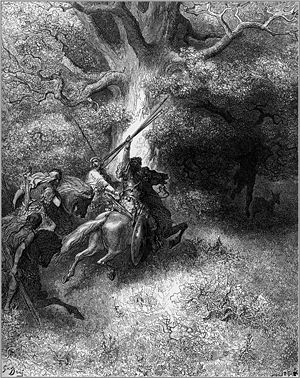
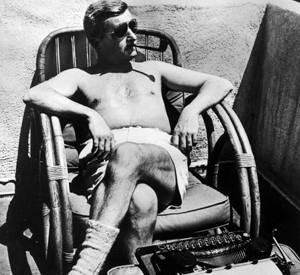
Sutpen, innocent of the immorality of his proposition because he is unaware of any morality outside of money, attempts to buy his wife off. Sutpen does not understand there is a limit to the power of the dollar he came to Haiti to seek. He does not understand that he “could have bought immunity from [Eulalia] for no other coin but justice” (Faulkner, Absalom, Absalom! 265). Sutpen’s design has no place for justice and the sentiment of scorned woman. Sutpen is ignorant of the very tenants of such ideas, for they have no utility to his design. Sutpen never learned “the dread and fear of females which…must have been drawn in with the primary mammalian milk” (Faulkner, Absalom, Absalom! 265). Having never even known his mother and barely understanding the sisters he left behind in West Virginia, Sutpen had no basis from which to understand women. Such innocence about women, like Agamemnon’s, would play significantly into Sutpen’s doom.
Later in the novel, Sutpen refers to Eulalia as “the old Sabine” (303-304). The Sabine tribe was exploited by the early Roman’s. “the Roman’s [kidnapped] Sabine women to assure the perpetuation of the Roman people” (Serafin 10). By referring to Eulalia as “the old Sabine” the Sutpen story is endowed with not only the significance of the attempting to found an empire, but the attempt to found one by exploitation and degradation of those not intended as part of the empire. This attempt is also reminiscent of the attempts at forming an aristocracy in antebellum south (the white exploitation of black slaves). Such imperialistic ideas were prevalent in the international politics of the thirties when Faulkner wrote the novel (the fascist governments of Germany, Italy and Japan). This strengthens a reading of Sutpen as representative of the ancient hero, the antebellum American south, and the modern man. When considering Sutpen as a modern hero, a representative of southern culture, and the historical significance of the Sabine women to Rome, there is a more basic accusation: the imperialistic impulse, be it political or economical, has been and continues to be characterized by man’s willingness to exploit and degrade his fellow man in the name of such pursuits.
The next phase of Sutpen’s journey is his life in Jefferson. Sutpen, after leaving all of the riches he earned in Haiti to his ex-wife except 20 slaves, goes back to America to begin his design anew. Sutpen’s second attempt to establish an empire of white songs takes place in Jefferson Mississippi, 1833. Not only is Jefferson the setting for this novel, it is Faulkner’s own mythological southern community for the majority of his novels. This makes Jefferson’s reactions to Sutpen representative of the south of which Jefferson was a microcosm.
Need help with Faulkner? Order a study guide!
Sutpen appears to the town of Jefferson, at least in one aspect, as suspicious, powerful, a “demon…who came out of nowhere and without warning upon the land with a band of strange niggers and built a plantation…tore violently a plantation” (Faulkner, Absalom, Absalom! 9). This demon arrived in on a horse, the two of them “looking as though they had been created out of thin air and set down in the bright summer Sabbath sunshine” with only “two pistols and a name which nobody ever heard before,” “acquired his land no one knew how…built his house, his mansion” the “largest edifice in the county not excepting the courthouse itself,” and married Ellen Coldfield, daughter of one of Jefferson’s respected merchants who “begot a son and a daughter which…should have been the jewels of his pride…only they destroyed him…or he destroyed them or something” (Faulkner, Absalom, Absalom! 32, 14, 11, 39, 9). This view of Sutpen gives the imposing aspect of his design and the sheer strength of his will. Though the town describes these aspects fearfully, it is the same aspects that establish him as a hero as well.
The other major view of Sutpen, one dominated by his will to create, as a “fine proud man” of whom it was also said “If God Himself was to come down and ride the natural earth, that’s what He would aim to look like” (Faulkner, Absalom, Absalom! 282). The town, though appalled was nonetheless drawn to Sutpen. This ambiguity of feeling for Sutpen works to create the rift necessary for the later generations, those of the novels present, to remember Sutpen as a myth. Any more specific or definitive accounts would anchor Sutpen too much in the mind of the town which would prevent him from “[breaking] free...against the yellow sky of dawn…as the apotheosis lonely, explicable, beyond all human fouling” (Faulkner, Absalom, Absalom! 287).
The distance created by conflicting views of Sutpen were strengthened by the social and physical distance he kept from the town. Sutpen’s Hundred was a dozen miles outside of town. Sutpen maintained a personal distance as well. For months the only thing the town knew about him was his name. This added to Sutpen’s intrigue, which leads to the ambiguous identity he holds for the narrators in the novel’s present. The narrators of the novel, in their presentation of the story of Sutpen strengthen a reading of the story as myth. They work as a Greek chorus, telling four different versions of Thomas Sutpen’s story (Serafin 18). The number of narrators, four, also alludes to the Gospels of Christianity. Faulkner’s presentation of Sutpen through the eyes of the town of Jefferson (except for one narrator who only sees Sutpen second hand through the eyes of people from Jefferson) to whom he appeared so glorious, heroic and demonic lends itself towards an ambiguity that gives lends such comparisons significance.
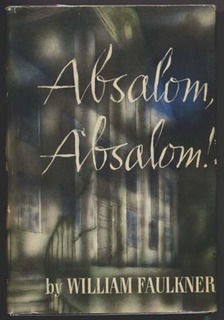
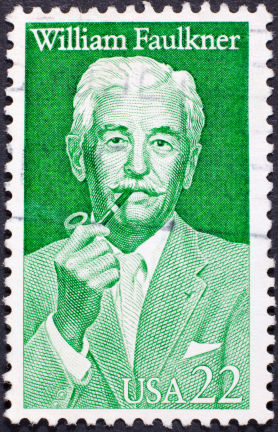
The details of this part of Sutpen’s life remain sketchy at best. Most of what the town was eventually to know about Sutpen when he first came to Jefferson was only to be learned years later (Faulkner, Absalom, Absalom! 33-35). The only thing they knew for certain for the first two years was that there were twenty “wild negroes,” Sutpen and a French Architect building a mansion twelve miles outside of town (Faulkner, Absalom, Absalom! 35). Two years later, when the mansion was finished Sutpen “lived in the Spartan shell” of his mansion “for three years” (Faulkner, Absalom, Absalom! 39-40). This willing exile in “masculine solitude” as the town saw it, widened the distance that would eventually shroud Sutpen’s story in mythical significance for the town (Faulkner, Absalom, Absalom! 39). By establishing the relationship between the town of Jefferson and Sutpen as mysterious and enigmatic, Faulkner invites the reader to view Sutpen from that same perspective. This establishes a relationship between the reader and the narrators of the story that defines the novel as modern. This justifies an interpretation of Sutpen as the modern hero.
Over the years leading up to war, Sutpen and Ellen have two children, Judith and Henry. This is the fruition of Sutpen’s plan. He has a son to pass his heritage on to. These were the golden years of Sutpen’s hundred. Then Henry, while attending classes at “the University of Mississippi, near Oxford, Mississippi” met “Charles Bon of New Orleans…a young man of worldly elegance and assurance beyond his years…with for background the shadowy figure of a legal guardian rather than any parents” (Faulkner, Absalom, Absalom! 313, 74). Charles Bon, Sutpen’s first son left behind in Haiti was “ten years [Henry’s] senior almost” but the two became bosom companions quickly (Faulkner Absalom, Absalom! 316). Bon visits Sutpen’s hundred, as Henry’s friend, and before long he is not only Henry’s boon companion, but engaged to Judith. Bon, and on his heels the Civil War signify the downfall of not only Sutpen but the antebellum southern economy and aristocracy he signifies. Sutpen’s design began to crumble just when Sutpen was most sure of its success.
The road of trials is not over for Sutpen and like many tragic heroes it never will be. Sutpen must return to the battlefield. “The Battlefield is symbolic of the field of life, where every creature lives on the death of another” (Campbell 238). Once again, Sutpen reaffirms his vitality and resourcefulness in the trial of war, but the simultaneous occurrences of the reappearance of Sutpen’s forsaken first born form the completion of Sutpen’s doom. This dooms realization against the backdrop of the Civil War is parallel to the Trojan War for Greek mythology that strengthens comparisons between Sutpen and Agamemnon: for both are glorious upon the field, but return home to not only death, but the destruction of their seed.[1] His innocence resembles “Oedipus in his lack of insight into himself and the influence of forces beyond his control” (Serafin 19). Given Faulkner’s appropriation of these two tragic heroes’s, the southern forces loss in the war, and the fact that Henry, like Absalom in Hebrew tradition, was busy killing his half-brother before he could marry his sister, the picture of Sutpen as the appropriation of the hero myth for modern man begins to take shape. Sutpen, though winning honors in the war, was defeated along with the rest of the south. Returning to Sutpen’s Hundred unaware as of yet the tragedy that has befallen the house of Sutpen, Sutpen learns of Bon’s death and Henry’s desertion of the family from Judith, “No. [Henry’s] not here…and [Bon]…Yes. Henry killed him” (Faulkner, Absalom, Absalom! 159).
[1] There is much criticism comparing Sutpen to Agamemnon, specifically in the result of their return home from war. Lennart Bjork’s and Joan M. Serafin both discuss different aspects of the similarities between the two. (Bjork 197-198, 199, 202-204) (Serafin 19, 23)
This management of the affairs of the hero’s house has been significant since the time of Homer. Odysseus succeeded in dispelling Penelope’s suitors. Agamemnon was not so successful with Clytemnestra and Aegisthus. Sutpen’s failure at home, given the parallels drawn between Sutpen and Greek tragedy, can be read as an example for modern man in much the fashion a Greek tragic hero would. Thus Sutpen, when confronted with the failure of his household, cannot over come his innocence and realize his plans failure. In this, Sutpen’s innocence exemplifies the “innocence” required for man to exploit his fellow man and at the same time believe himself to be moral. Sutpen’s failure gives the reader impetus to make better decisions and found more just social and economic systems.
Sutpen does not realize his design cannot, and will not every succeed. After Judith tells Sutpen of his failure to “establish a line of dukes” he does “not even pause for breath before undertaking to restore his house and plantation as near as possible to what it had been” before the war (Faulkner, Faulkner in the University 272) (Faulkner, Absalom, Absalom! 160). Sutpen’s innocence blinds him. He will not ever be able to rebuild his dynasty that he tore from the land by way of slavery. The implication is that such tearing of the land is as immoral as the means by which it was tore. Not only is Sutpen too old, near sixty, but the society he modeled his design after no longer exists. Sutpen’s innocence does not allow him to call his failure a retribution, nor sins of the father come home to roost; not even calling it bad luck, but just a mistake…no moral retribution you see: just an old mistake in fact which a man of courage and shrewdness…could still combat if he could only find out what the mistake had been (Faulkner, Absalom, Absalom! 267-268).
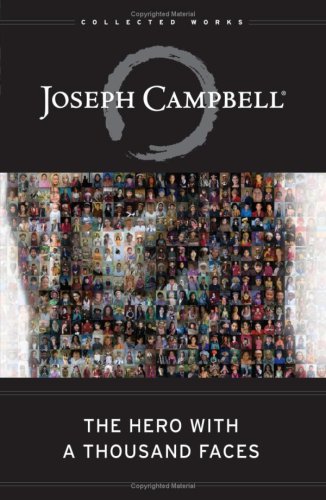
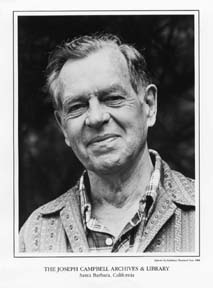
utpen never accomplishes his design, and dies without knowing his failure. He begins running a small trading shop, and is eventually murdered by one of the men, Wash Jones, who was in his company in the war. He murders Sutpen for impregnating his teenage daughter. Sutpen had to try one more time to sire at least one son that would live, and in this act his fate is sealed. In classic Greek fashion, Wash Jones also murders his daughter, the baby and himself (Faulkner, Absalom, Absalom! 287-290). Sutpen remains innocent to the end so that the lesson of his innocence, an innocence endowed with both mythological and modern significance, is not lost.
The narrators, on the other hand, are left to speculate different causes of the disintegration of the Sutpen Family. The allusion to the story of Absalom infers the central issue would be incest, but the central paradox for Sutpen, the south, and mankind is the exploitation of man by his fellow man. As Sutpen himself says, at least in one narrator’s imagination of a conversation between Sutpen and Henry, “So it’s the miscegenation, not the incest, which you can’t bear” (Faulkner, Absalom, Absalom! 356). In both Go Down, Moses and The Sound and The Fury the issue of incest parallels the issues of white pride and miscegenation (Brooks 245, 326-329). This is particularly effective because of the significance of a woman’s purity in southern aristocracy and her vulnerability to sexual predation. The unspoken word here is rape. And the true rape is the southern white rape of the land and his fellow man. Their fear of miscegenation is a fear of retribution for their moral brigandage. Sutpen had “[played] dangerously with pride and a plan for magnificence” and his fear is the fear of any person who would play the dangerous game of moral brigandage (Serafin 18).
This fear is the same fear that led the Roman’s to capture the Sabine women. The same fear that lead Agamemnon to sacrifice his daughter before sailing home. This is the same fear that lead southern states to form the Ku Klux Klan. This fear is an indictment against the acts of Sutpen, Agamemnon, southern slave owners, and the Romans. This fear is an acknowledgement that the innocence is feigned. The Romans knew very well their imperialistic endeavors would require a large army if they were to survive. Agamemnon knew his plundering of Troy could anger the Gods and so he sacrificed his daughter rather than face retribution himself. Sutpen knew he was exploiting the slaves who built his mansion and worked his fields. The fact that his anger at the slave who turned him away from the big house became the fuel for his heroic dedication to his design is evidence that he knew. This infers that southern whites, despite confessions of Christianity, knew that blacks were indeed created equal and had souls that demanded they be treated like humans. To profess such piety, and commit such heinous crimes requires a unique innocence, one feigned for the benefit of those in power.
Lastly, the revealed significance of Sutpen as a tragic hero must be synthesized in such a manner that explains the novel as a renewal of the hero myth for modern America. Sutpen is a man with heroic qualities that embody the ideal of modernity: he is self-made; he is resourceful; he understands discipline and vision. Sutpen is also the embodiment of man’s inhumanity to man: his desires and dreams are built upon and shaped by inhuman treatment of his fellow man. He can, like all moral brigands, willingly suspend knowledge of right and wrong to fit the establishment of an empire. Sutpen is also the realization of an American mythological hero: his journey is that of the hero, his tasks of the scope of the hero, and his failure of the importance of the hero’s.
These three aspects of Sutpen’s significance, when taken together reveal not just a tendency in the antebellum south, or in modern man. They reveal a more universal mythological significance. This deeper significance points to a more timeless message than the injustice of slavery or the tendency of political and economic imperialism to exploit the individual. They reveal a significance for all people who “[perform] their acts of simple passion and simple violence” (Faulkner, Absalom, Absalom! 100). Humankind’s exploitation and degradation of its fellow man in the name of any pursuit ultimately undermines the pursuit it is employed to secure. This is the truth at the heart of the myth of Thomas Sutpen. The realization of the timelessness of this truth is something worth the effort it requires of literary criticism.
Works Cited
Bjork, Lennart. “Ancient Myths and the Moral Framework of Faulkner’s Absalom,Absalom!” American iterature 35.2 (1963): 196-204.
Bloom, Harold, ed. William Faulkner’s Absalom, Absalom! New York: Chelsea House, 1987.
Brooks, Cleanth. William Faulkner: The Yoknapatawpha Country. Baton Rouge: Louisiana State University Press, 1963.
Campbell, Joseph. The Hero With a Thousand Faces. New York: Bollingen, 1949.
Faulkner, William. Absalom, Absalom! New York: Random House, 1936.
---. Faulkner in the University. Eds. F. L. Gwynn and J. L. Blotner. Charlottesville, 1959.
The Holy Bible: New International Version. East Brunswick: International Bible Society,1984.
Irwin, John T. “Doubling and Incest / Repetition and Revenge.” William Faulkner’s Absalom, Absalom! Ed. Harold Bloom. New York: Chelsea House, 1987. 9-34.
Porter, Carolyn. “William Faulkner: Innocence Historicized.” William Faulkner’s Absalom, Absalom! Ed. Harold Bloom. New York: Chelsea House, 1987. 57-73.
Serafin, Joan. Faulkner’s Uses of the Classics. Ann Arbor: UMI Research, 1983.
Snead, James A. “The “Joint” of Racism: Withholding the Black in Absalom, Absalom!”
William Faulkner’s Absalom, Absalom! Ed Harold Bloom. New York: Chelsea House, 1987. 129-141.
Stonum, Gary Lee. “The Fate of Design.” William Faulkner’s Absalom, Absalom! Ed.Harold Bloom. New York: Chelsea House, 1987. 35-55.
Sundquist, Eric J. “Absalom, Absalom! and the House Divided.” William Faulkner’s Absalom, Absalom! Ed. Harold Bloom. New York: Chelsea House, 1987. 91-104.
Tobin, Patricia. “The Time of Myth and History in Absalom, Absalom!” American Literature 45.2 (1973): 252-270.
Other Hubs on 20th Century American Literature
- How to win the Nobel Prize even if you can't sell a book, or the TRUE story of William Faulkner
When William Faulkner was awarded the Nobel Prize for Literature in 1949, his works in the United States had been out of print for almost a decade. While writers like Steinbeck and Hemingway dominated the... - Literature You Should Own, But Probably Don't. Part 2: 20th Century American Literature: Postmodern
This is part two in a continuing series of hubs all of which are designed to inform and guide anyone who might want to know a little bit more about the rich tradition of art, letters and philosophy we have... - Why I know Kurt Vonnegut is in heaven right now
Before anyone writes a nasty comment at the end of this Hub, I want to make sure I clarify that the subject line of this Hub is a joke. It is the same joke Vonnegut made about Isaac Asimov, another great... - Kurt Vonnegut's Bluebeard: Writing About Writing For People Who Don't Read
Kurt Vonnegut, one of the most prolific if not best American writers of the second half of the twentieth century, first earned a reputation for himself as a science-fictionist with his early works, The Sirens...









